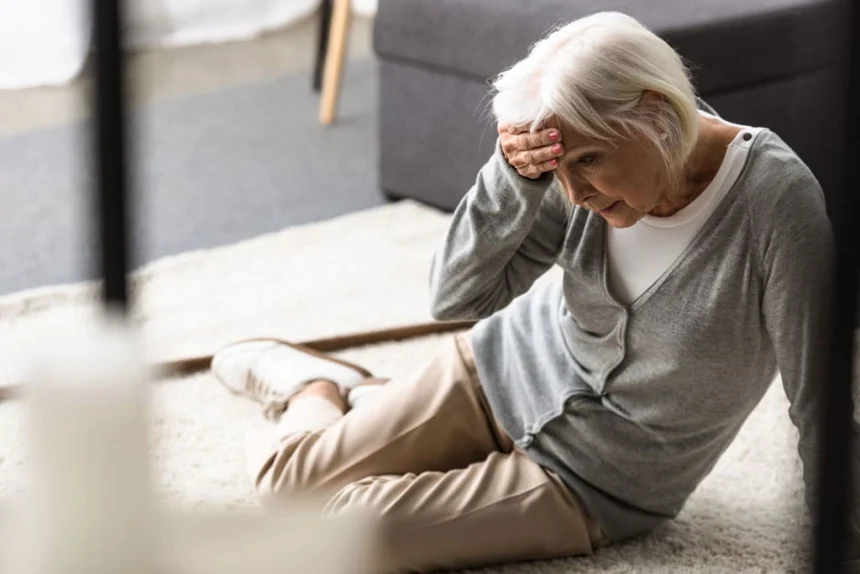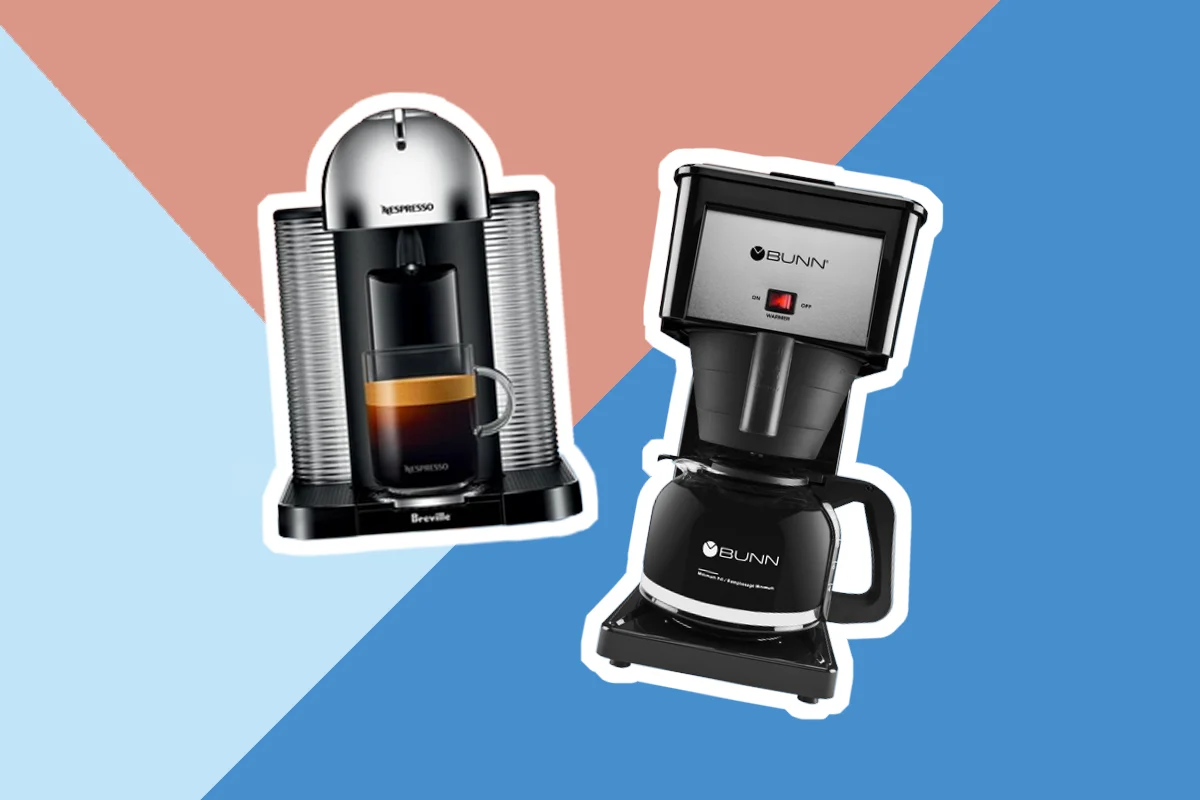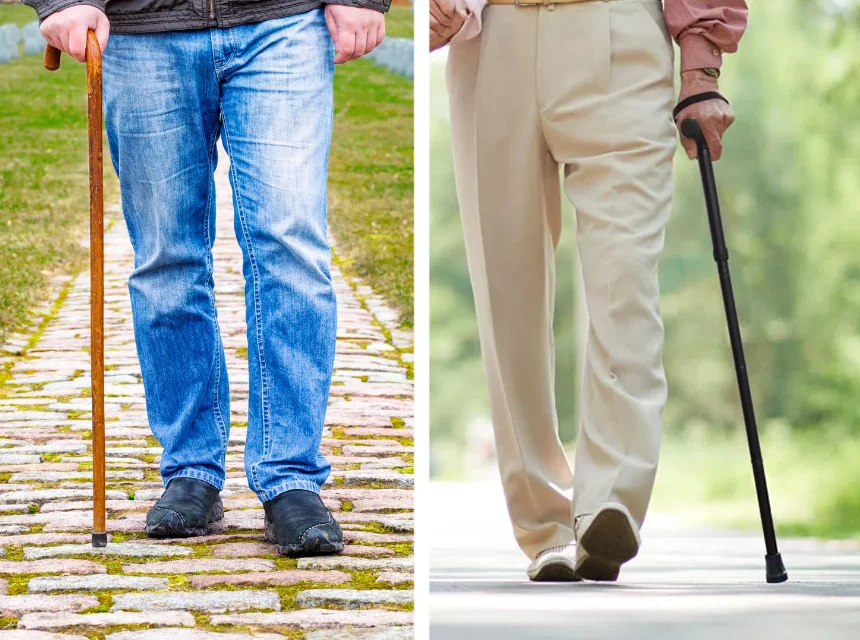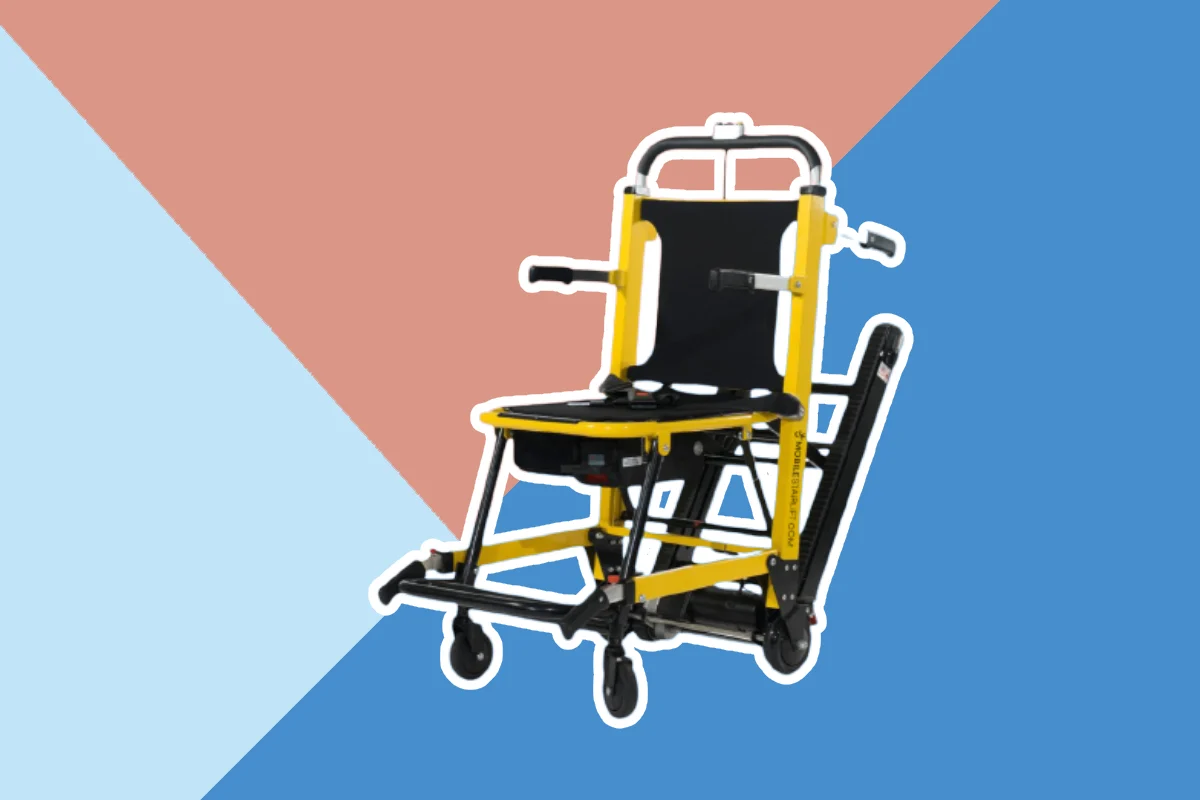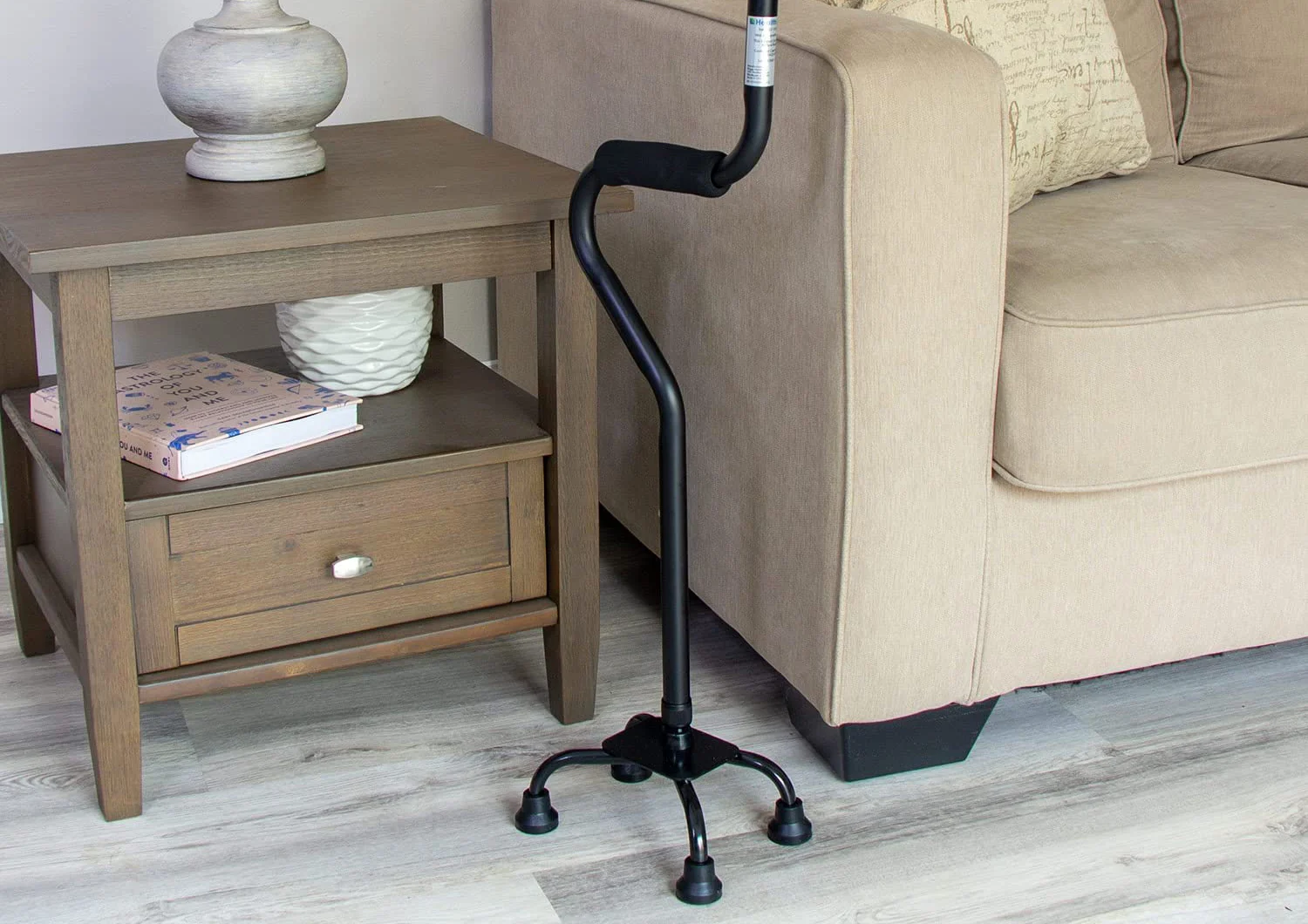The shower area can be dangerous because the wet and slippery floor increases the chances of a fall and the hard surfaces can cause injuries. The risk tends to be higher for seniors as their strength, mobility and coordination skills weaken with age. Knowing what to do after falling in the shower can enable you to get help and also prevent a serious injury.
We have reviewed some of the most common causes of shower falls, the injuries you could incur in such an incident and the steps you should take to help you in case you slip and fall in the shower. Our guide also includes preventative measures, such as non-slip mats, that would help the elderly to prevent shower fall accidents.
What can Cause Falling in Shower
There are several factors that cause slipping in the shower. We look at the most common ones below.
Slippery floors

Slippery floors are a common cause of falling in the shower injuries. Leaking faucets, overflowing sinks and damaged tiles can make you trip on the wet surface and lose your balance. A shower chair or a grab rail can be handy, pun intended, because you can hold onto it to break your fall. Otherwise, you should use your hand or forearm to protect your head as you fall and try not to panic.
Shower sill
Shower sills protect the surrounding space from spillage. They need to be low and properly angled to prevent slippery floors. The standard height for shower sills in the United States is a minimum of 2 inches from the drain. It should slope inward at a 5-degree angle towards the drain for proper drainage. If you install a level shower sill, it would cause water stagnation. A sill that angles away from your drainage system could cause water to spill onto the surrounding floor and make you slip and fall.
Lack of safety
The right safety measures can help to prevent falling in the shower injuries. They include:
- Grab bars: Grab bars are available in various styles and sizes, and you can install them in different configurations. They are strategically positioned 33 to 36 inches away from the floor to offer you stability when entering and exiting the shower. A good grab bar should have adjustable height to accommodate different users. It should also be able to support weight of up to 250 pounds. They are useful fittings that you can grab if you start slipping in the shower to prevent falls and injuries. The 24-inch long Amazon Basics Bathroom Handicap Safety Grab Bar is made of sturdy stainless steel that accommodates up to 500 pounds. It comes with a mounting kit and an installation guide.
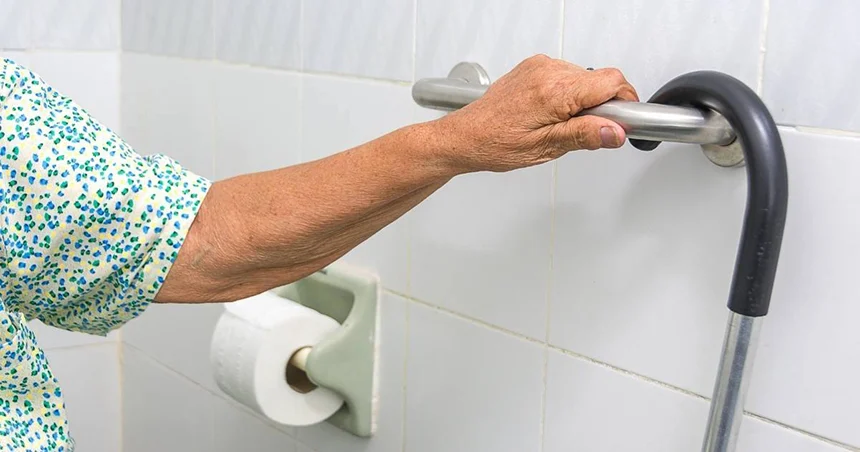
- Anti-scald faucets: Sudden changes in water temperature could make you jerk away and stumble or fall. These safety devices are essential for the elderly because they protect them from scalding by extremely hot water and from any resultant falls that may be caused by their poor balance.
- Shower seat: As our bones and tissues break down as we age, it could weaken our strength to a point that we cannot stand for long. A built-in shower seat or a portable seat allows seniors to sit while taking a bath, thus reducing the risk of falling in the shower injuries.
- Non-slip surfaces: To prevent slipping in the shower, a floor should be slip-resistant. You could add anti-slip coatings and non-slip bath mats to increase traction. Another option is a floor with grooves that reduce the risk of slip and fall in the shower.
Poor coordination
Certain types of medication, drug abuse and the ethanol in alcohol could affect your mood, coordination Trusted Source Alcohol | The Nutrition Source | Harvard T.H. Chan School of Public Health Moderate drinking can be healthy—but not for everyone. Learn more about weighing the benefits and the risks. www.hsph.harvard.edu and concentration. This heightens the chances of falling and could negatively influence your balance and judgment skills or slow down your reaction if you fell in the shower. If you trip and you cannot grab a fixture in time to prevent a fall, you risk hitting your head on a hard surface.
Age
According to The National Institute on Aging Trusted Source Maintaining mobility and preventing disability are key to living independently as we age | National Institute on Aging Learn about how NIA-supported research is helping people to maintain mobility and prevent disability as they age. www.nia.nih.gov (NIA), we could lose our mobility as we age. This is reflected by altered balance, gait and physical strength, and it makes us susceptible to frequent and severe falls. To avoid such accidents, showers should have safety measures like fixtures that you can easily access and bars that you can grab to prevent falling in the shower injuries.
A walk-in shower is a great solution that allows caregivers to easily give a bath to users who use wheelchairs for amputees. Another option is a walk-in tub which has built-in seating and a low threshold that allows you to conveniently transfer from the wheelchair to the tub to prevent slipping. For seniors and individuals with mobility issues, you can reduce the risk of falling in the shower injuries by ensuring essentials like towels, soap and shampoo are within reach.

Poor visibility
One of the health issues that come with age is declining vision that could cause various eye diseases that could become serious if they are not detected and treated early.
To avoid slipping in the shower because of lack of visibility, keep the area well-illuminated and remove any loose cables that could trip the user. If you are worried about the glaring light making you unable to sleep again after a nighttime bathroom break, you can use a good night light instead to avoid stumbling in the dark.
Most Common Shower Fall Injuries
If you ever fell in the shower, these are the most likely injuries that you might incur.
Strain
You can get a strain or a sprain in the shower if you overexert or twist your limbs or muscles. This is common among the elderly as they lose their strength and flexibility. One way to avoid this form of shower fall injuries is by keeping essentials and grab bars within easy reach. If you find a strain, avoid massaging or applying heat on the affected area to prevent increased swelling.
Fractures
Fractures refer to bone injuries which become more common as we lose our bone density with age. We have explained the signs of broken bones after slipping in the shower in the rest of this guide.
Contusion
Contusion, or a bruise, is the most common injury incurred from slipping in the shower. You could be bruised if you notice discolored skin, or pain when you apply pressure on a certain area, or a small swelling.
Brain injury

Serious falling in the shower injuries include mild or traumatic brain injury from hitting a hard object or surface. This type of accident can cause temporary memory loss in mild cases and death or long-term complications in severe situations. Seniors are particularly vulnerable as they are prone to having poor balance and coordination.
What to Do After Falling in the Shower
The following are the steps you should take after you slip and fall in the shower.
Don’t move and no panic
The first and most important thing to do if you fell in the shower is to stay calm. Take a moment for a deep breath to overcome the shock.
Self-check
After you have calmed down, check yourself for any pain, cuts and broken bones. We have listed the signs of broken bones in the next section. If you have a cut, use a towel or your bare hand to apply pressure and stop the bleeding.
Do not move if you have a serious injury. It is possible to have serious injuries but not feel any pain because of the initial shock.
If the injury is minimal, you should move out of the shower to a place where you can safely examine the injury in detail.
Signs of broken bones
The common signs of broken bones from falling in the shower injuries are:
- Floppy or deformed limbs
- Bruising or swelling on limbs
- Pain when you move the limb
Mend wounds
Stop any bleeding wound by applying pressure on it with a towel or using your hand. Don’t run water on the wound because it can prevent or delay coagulation.
How to get up
If you are able to get up after you fell in the shower, follow the following steps to get up comfortably.
Turn on your side and then push yourself into a side-sitting posture. Next, use your hands and knees to crawl slowly to any object that can support you steadily as you stand up. Kneel next to the object. After that, place the foot of your stronger leg flat on the floor, and while grabbing the object with both hands, push yourself upwards into a seated position.
Call for help
If there is someone nearby, shout out for help to alert them. You could also dial 911 if you have a phone within reach. There are emergency communication gadgets that are waterproof and wearable in the shower. This device would be useful in getting help for falling in the shower injuries.
See a doctor
You should see a doctor for serious falling in the shower injuries such as:
- Continuous bleeding
- Wounds that require stiches
- Broken bones
- Dizziness, blurred vision and ringing in your ears which point to concussion
- Joint locking
- Strain and brain injury
Preventing Shower Falls for Elderly
The elderly are the group most at risk of injuries from falling in the shower. However, you can apply safety measures that can prevent or minimize these accidents. They include:
Non-slip mats
A hard and slippery surface increases the risk of falling. To improve grip and traction, consider using a non-slip mat that will not slide under you and trip you. These
Shower safety
Grab bars are essential for smooth entry and exit into showers. Stander Security Pole comes with adjustable height, 4 varied hand grips and weight capacity of up to 300 pounds. It keeps you safe and stable to avoid slipping in the shower.
Proper lighting will also improve vision for the shower occupant.
The shower sill should be sloped towards the drain to avoid water overflow.
Close watch
It would be dangerous if you fell in the shower while living alone and cannot shout out for help. If you cannot hire help, a great solution would be acquiring an alert device such as Mini Guardian 4G Life Saving Medical Alert System by Medical Guardian with GPS tracking, emergency call button, runtime of 5 days, and water-resistant coating that is useful in seeking help for falling in the shower injuries.
Prevent

Install shelves that are easy to reach, accessible controls and shower seats that are comfortable for seniors and wheelchair users. We have already discussed other preventative tips for falling in the shower injuries.
Exercise
Exercise is crucial for seniors to maintain their independence. You are less likely to fall in the shower if you are physically active because it improves bone density, muscle strength, stamina and flexibility. Suitable exercises for seniors should emphasis on mobility, aerobics, balance and strength.
Regular check-up
The American Optometric Association Trusted Source Senior Vision: Over 60 Years of Age | AOA Vision changes occur as you get older, but these changes don’t have to affect your lifestyle. View information for seniors on vision changes and problems, driving safely, and dealing with vision loss. www.aoa.org recommends that individuals aged over 60 years should get an annual eye examination. Seniors should also get blood pressure screening, bone density scan, blood glucose test, among other checkups.
Final Thoughts
Shower accidents are increased by the hard fixtures and surfaces that could hit your head if you slip on a wet floor. They can also be caused by tripping objects and hard-to-reach essentials that make you strain to access them. A walk-in shower with a low threshold provides convenient access to walkers for seniors so the users can easily transfer in and out of the shower without the risk of a slip and fall accident. Our detailed guide on what to do after falling in the shower includes information on the common shower fall injuries and how to prevent such accidents among the elderly. This group is vulnerable because our mobility, balance, coordination, and strength diminish as we grow older.












